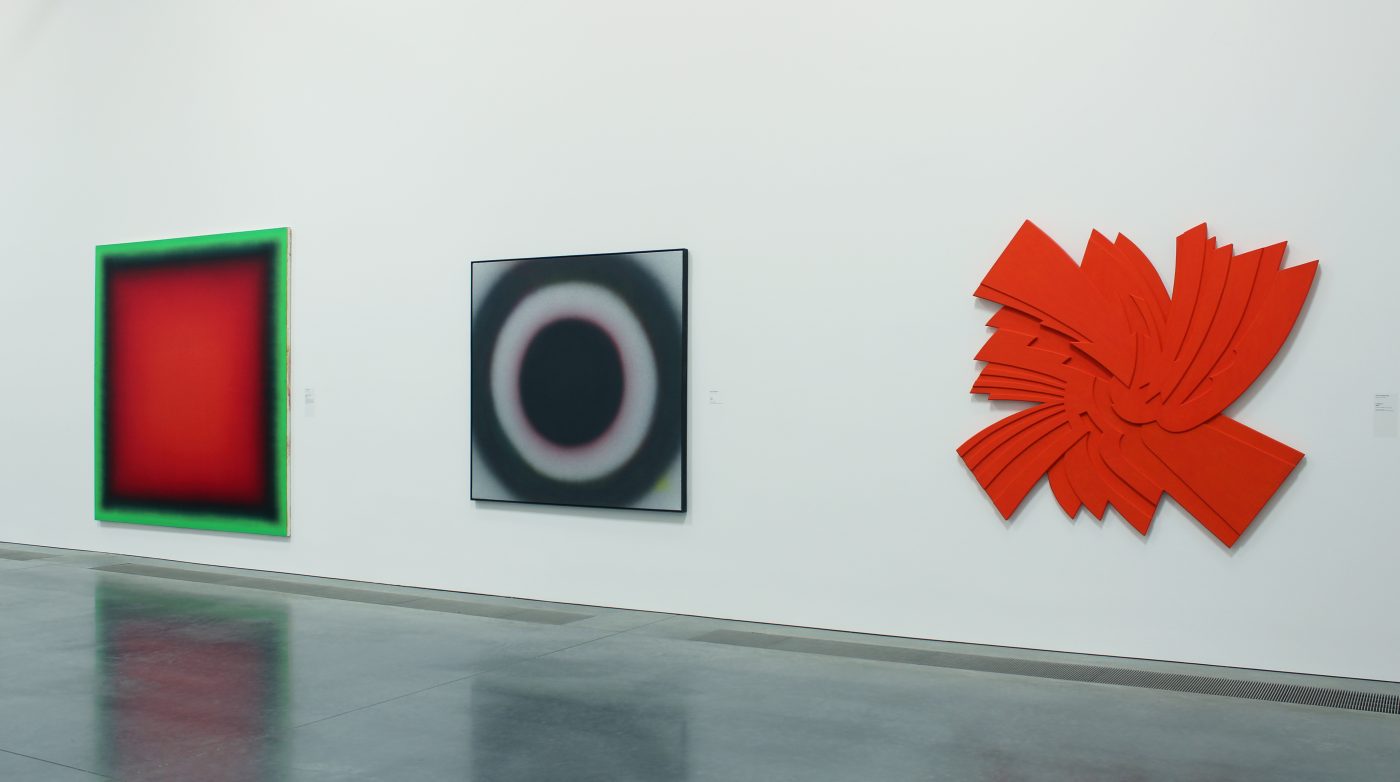What, one might ask, is abstract art? By definition, abstract art does not depict a person, place, or thing in the natural world but it can be about many things—like the actual paint on the canvas and the way the artist has applied it or the feelings and emotions that the color of that paint convey. Abstract art compels us to think “What is this painting about?” And the answer often requires time and close observation.
The geometries of paintings by Ilya Bolotowsky, Dan Christensen, and Eric Freeman on view in this gallery evoke Abstraction’s genesis in the work of early twentieth-century artists Piet Mondrian (Dutch, 1872–1944) and Kasimir Malevich (Russian, born Ukraine,1878–1935), whose investigations of the circle and the square were the first chapter in Abstract, or Non-Objective, Art. In the 1990s, Ross Bleckner began to paint aspects of the body, drawn to both the beauty and mutability of cells viewed at the microscopic level. In Mysticism for Beginners, jittery masses of circular shapes make explicit reference to human—even spiritual—concerns.
Works by Perle Fine, Louisa Chase, and Mary Heilmann span a half century and bring to the fore abstraction’s myriad applications: Fine adds sand to oil paint to heighten visual interest; Chase explores a painterly calligraphy; and Heilmann’s process exposes the drip and swirl of the paint. Lynda Benglis’s aggregate of sandcast glass and metal oxides is doggedly abstract even as it alludes to primal matter. In Deacon Rides Again, Harry Kramer has titled his abstract expressionist painting after jazz saxophonist Big Jay McNeeley’s famous 1952 album. Richmond Burton approaches color and form with an overallness. Valerie Jaudon uses a rigorous visual syntax and juicily applied paint to activate the surface of Blue Springs. The elegantly carved shapes of Jack Youngerman’s Conflux II explore organic and geometric form and operate in the blurred space between painting and sculpture. Shimmering rectangles of paint in Agnes Martin’s Rain (Study) hover on the canvas, dense with gestural markings and the unmistakable trace of the artist’s hand.
Titles often give indications of meaning in abstract work. John Torreano’s enigmatic P.M.’s Mum can be decoded as a reference to the hundreds of chrysanthemum drawings Mondrian made early in his career. He later recalled: “I enjoyed painting flowers, not bouquets, but a single flower at a time, in order that I might better express its plastic structure.” The pictorial organization of Torreano’s jewel-studded plywood pays abiding homage to Mondrian’s seminal beliefs.


